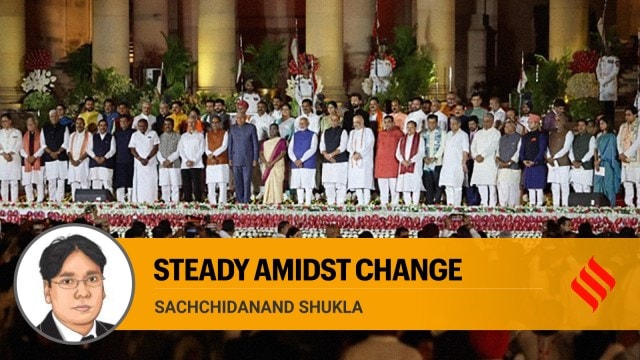
The general elections have led to a coalition government at the Centre. There is apprehension in certain quarters that a return to coalition politics after 10 years of single-party majority will lead to a shift in the country’s economic trajectory. However, does a coalition government necessarily mean a radical change in India’s growth path?
India has seen coalition governments since the economic reforms of 1991. It’s only in the past 10 years that voters have given a decisive mandate for one party. The country’s economic history since 1991 has shown that coalition governments are good at reform and they also deliver high growth. The broader India story and the economic growth trajectory are likely to remain intact despite global headwinds. India should be able to deliver a growth rate of 6-7 per cent in FY25, even with a coalition government.
The total factor productivity (TFP) growth has been on the rise over the past decade and was approximately 2.2 per cent compared to -0.3 per cent for emerging markets in the previous decade. This can be sustained or even raised. The twin balance sheet problem is no more a constraint on growth. Corporate- and bank-balance sheets are in great shape and can support the next leg of growth and corporate capex cycle.
Several reforms are, however, still needed. Their pace and intensity is critical. The nature as well as the pace of reforms has varied considerably under different governments over the decades. It has also been noticed that though reforms may not bring immediate electoral dividends, Indian voters are known to punish those — both at the Centre and state levels — who fall into policy paralysis.
The reform and growth trajectory will have to become much broader and inclusive. The new government is likely to continue with its investment-led economic agenda but it may need to modify its priorities somewhat. Reforms pertaining to manufacturing, ease of doing business measures, digitisation and skilling are likely to continue. However, factor market reforms — related to agriculture, land and labour — could become more difficult. So will privatisation and asset monetisation.
To support job creation and consumption, the focus will have to remain on infrastructure creation. Critical infra projects will continue but the onus may shift onto private capex gradually. Similarly, developing the manufacturing base via the PLI scheme is likely to continue given the need for job creation, the global backdrop of an industrial policy bias and the continuing China+1 theme. Moreover, several growth opportunities can be unlocked by removing impediments that hinder business and investments across sectors through simplification of procedures.
The focus of the government, which has been overly reliant on supply-side measures, will now have to reconcile with some broader demand revival measures. Government spending will have to be more accommodative of shifts at the bottom of the pyramid. There will be potentially renewed attention on agriculture, rural incomes, social welfare, creating jobs and stimulating consumption. The additional fiscal space of Rs 1.2 trillion or 0.35 per cent of GDP available to the government for FY25 may now be used to provide succour to the needy segments. Also, the fiscal deficit targets 5.1 per cent and 4.5 per cent of GDP for FY25 & FY26 respectively are unlikely to be at risk. But, there is little likelihood that the timeline will be hastened. Similarly, the government will not raise additional borrowings thanks to the comfortable revenue buoyancy and fiscal picture.
India’s relative success in recent years owes a lot to macro-stability and the underlying factors are unlikely to change due to the institutionalisation of reforms, such as the Inflation targeting mandate — these will keep a leash on the fisc. Moreover, the global crude price moderation and the lower oil intensity of the economy could keep the current account deficit under control. With the twin deficits under control and the MPC targeting inflation, macro-stability is unlikely to be jeopardised.
The budget in July will be a litmus test. It will provide clarity on the economic direction and also dictate the interest rates and the trajectory of the rupee. India is at a critical juncture in its economic history. It will have to rise to several domestic and global challenges. It must also navigate shifts in geopolitics and technology and deal with challenges posed by the decarbonisation imperative. It is unlikely that political expediency will trump economic logic and priorities and change the basic policy direction of the new government.
The writer is group chief economist, Larsen & Toubro. Views personal
Click here for real-time updates on the Lok Sabha Election Results 2024


